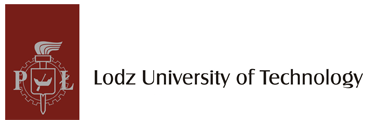Student achievements
...
-
RuleBased Data-Driven Approach for Computer Aided Diagnosis of the Peripheral Zone Prostate Cancer from Multiparametric MRI: proof of concept
Jakub Jurek
and Marek Kociński, Andrzej Materka, Are Losnegård, Lars Reisæter, Ole J. HalvorsenThe best article in the "Biomedical and biometric applications" category.
Signal Processing Algorithms, Architectures, Arrangements and Applications (IEEE SPA 2017)
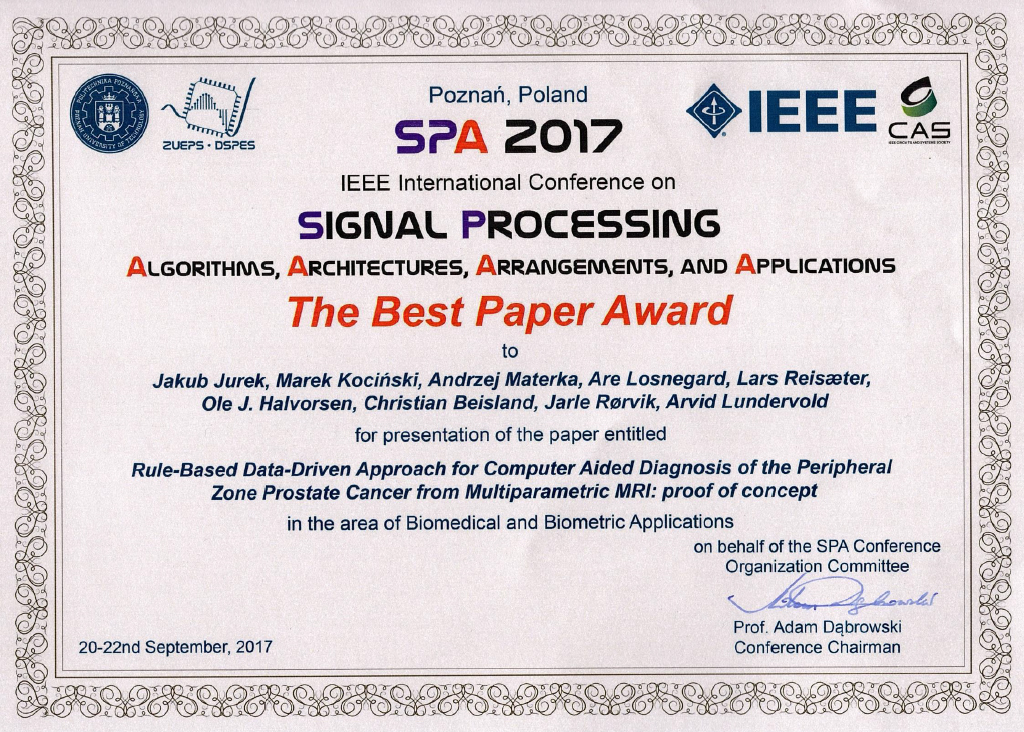
Analiza wpływu błędów map referencyjnych na dokładność lokalizowania terminala z wykorzystaniem RSSI i algorytmu filtracji cząsteczkowej
Robert Kawecki
The third prize for the best paper in the competition for young authors.
KKRRiT 2018 Conrefence
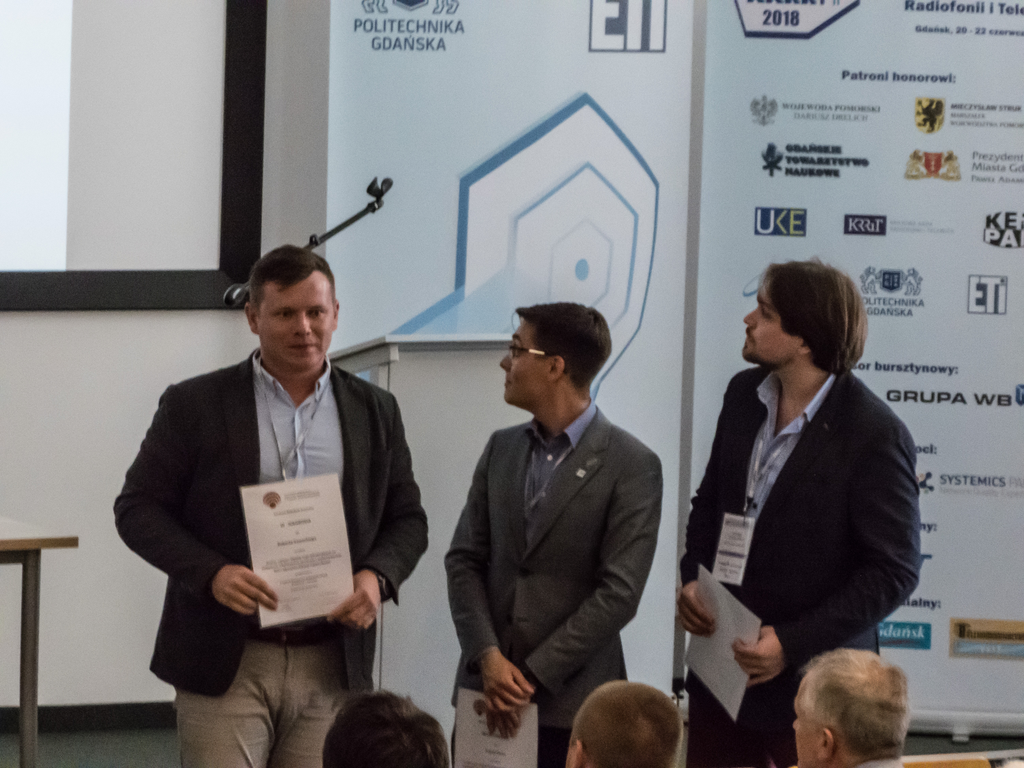
The North Sea Bicycle Race ECG Project: Time-Domain Analysis
Dominika Długosz
and Aleksandra Królak, Trygve Eftestøl, Stein Ørn, Tomasz WiktorskiThe best paper award in the competition for the best article and its presentation as part of the 4th Doctoral Symposium on Recent Advances in Information Technology (DS–RAIT'17).
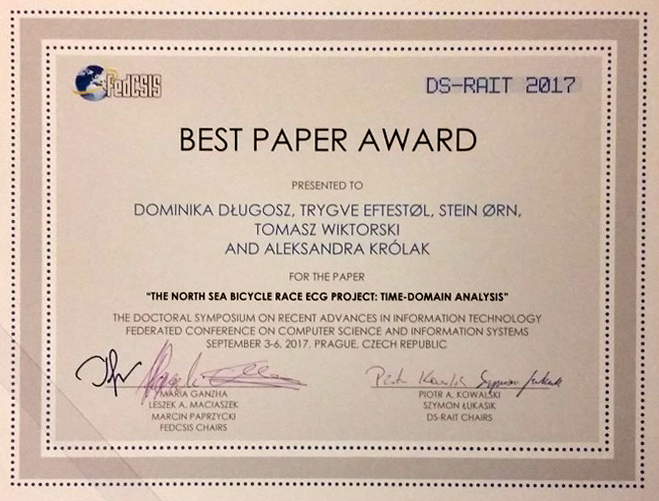
-
Requirement analysis and modeling of the solar-powered electric car lithium-ion battery pack
Jakub Felcenloben
3rd place in the Competition for the best master's thesis organized by the Łódź Branch of the SEP in the 2019/2020 academic year.
Supervisor: Piotr Korbel
Abstract
The Bridgestone World Solar Challenge is a competition aimed at students and its objective is to challenge the teams to build a solar-powered passenger electric car, that can prove its practicality and reliability on a 3000-kilometer route across the Australian continent. The teams have to present a car, that can travel a maximum of 1200 kilometers with four occupants on a single charge. Lodz Solar Team is a student project based on the Lodz University of Technology, that has experience in designing and building passenger solar cars. The latest challenge is the battery pack design for the Eagle Two – the second Polish-built solar electric car. The aim of this thesis is to provide a scope of the current state of the technology in the electrochemical batteries used in the electric cars, to assess the requirements, that the design has to meet, present the design and to provide methods of verification of the compliance with the capacity requirements.
An electronic circuit for mutipoint force measurements in medical applications
Dominika Wójcik
2nd place in the Competition for the best master's thesis organized by the Łódź Branch of the SEP in the 2018/2019 academic year.
Supervisor: Marcin Kociołek
Abstract
Multipoint forces measuring systems are used in medicine more and more frequently. Their growing popularity is a result of the capability to measure a distribution of forces, which in many medical fields is a key factor in the search for any harmful deviations from normal state of an organism. However, multipoint force measurement systems in medical applications face many challenges. The precision of multipoint force measurement is another and often the most important challenge in systems whose task is to warn a physician about excessive force. The aim of this thesis was to design, build, launch and test a multipoint force measurement system. The aim of the study was achieved. Within the framework of the work, a force measuring system for two sensors was built. One with use of Flexiforce A301 sensor and the second with a strain gauge.
Machine learning methods in application to automated determination of arterial input function for quantitative estimation of renal perfusion
Martyna Wasilewska
3rd place in the Competition for the best master's thesis organized by the Łódź Branch of the SEP in the 2018/2019 academic year.
Supervisor: Artur Klepaczko
Abstract
One of the most popular methods for renal perfusion quantification is DCE-MRI – Dynamic Contrast-Enhanced Magnetic Resonance Imaging. Thanks to the application of one of the various pharmacokinetic models, it could be used for image-based assessment of perfusion parameters. In any case, it is necessary to determine an arterial input function (AIF), i.e. the concentration of contrast agent in the aorta over time, supplying the tissue of interest in blood. It is usually performed manually, which leads to an increased error of this method. The aim of this dissertation is to present a possible method to automatize the determination of the AIF while eliminating the influence of the inflow artifact. The proposed procedure consists of two stages: the first is segmentation of the descending aorta by means of commonly used filters and a vascularization function; in the second stage, it uses a k-means clustering method to choose the region lying close to renal arteries and still not affected by the inflow artifact. Such a solution would increase the accuracy and reliability of image-based perfusion quantification methods. The proposed method was applied to real examinations of 10 healthy volunteers. Alongside each imaging series, an automatic segmentation of the aorta was performed to assess the reliability of the method discussed. The obtained GFR results were compared with standard methods other than image-based: iohexol clearance (the gold standard) and eGFR based on the MDRD equation and creatinine results. The precision obtained is similar to the one found in the literature. The agreement with iohexol-based values and eGFR is acceptable, especially taking into account that the agreement between the reference methods themselves is not ideal. The stated goal has been achieved – one of the first stages of the AIF determination has been automated, eliminating the error coming from the inflow artifact in DCE-MR images.
An adaptive disparity map algorithm for GPU
Maciej Janeczek
2rd place in the Competition for the best engineering diploma thesis organized by the Łódź Branch of SEP in the 2016/2017 academic year.
Supervisor: dr. Piotr Skulimowski, Auxiliary supervisor: dr. Mateusz Owczarek
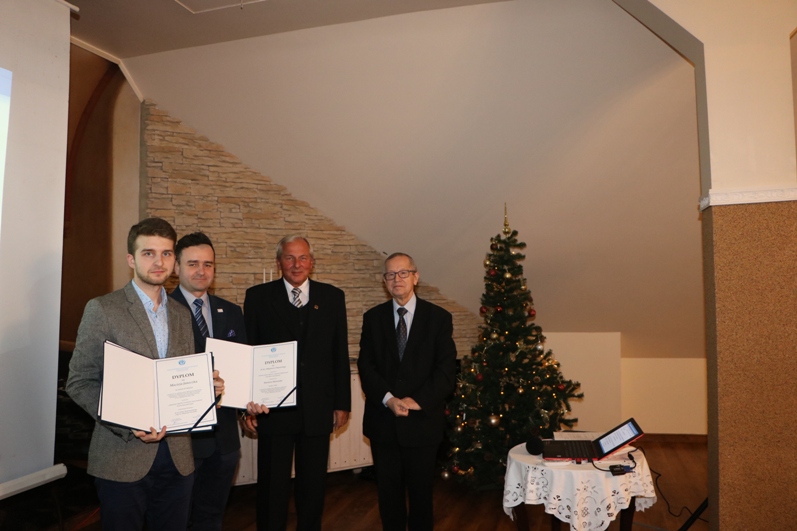
Abstract
Nowadays most of the applications of the stereovision are related to the mobile devices, especially in the field of computer vision systems and robotics. It is crucial to create efficient and robust algorithms that would allow their implementation in wide range of the environments. This thesis presents an efficient adaptive algorithm of stereo matching applied and optimized for mobile Graphics Processing Unit (GPU). It is a well known problem that most of the stereo vision algorithms are based on basic stereo matching algorithm that in most of the cases is the main factor of the computation complexity in solving the correspondence problem. The presented method introduces a novel approach to this problem by adaptively combining the cost function by using a very efficient small matching window and sparse accumulated windows similar to those applied in convolutional neural networks. Adaptability of this method is based on local characteristics of the images. Such a solution allows to compute disparity maps of subpixel precision both on highly textured areas of the image as well as on weakly matchable texture-less areas like walls and floor. The algorithm is very efficient computationally due to its design that is specially dedicated to a mobile GPU architecture. Keywords: Stereo vision, machine vision, mobile applications, disparity, depth map. This thesis was supported by the European Union’s Horizon 2020 Research and Innovation Programme under grant agreement No 643636 "Sound of Vision" in years 2015-2017.
Analysis of EMG signal from calf muscles amang healthy persons and diabets
Weronika Ślasko
1st honorable mention in the competition in the Competition for the best engineering diploma thesis organized by the Łódź Branch of SEP in the 2016/2017 academic year.
Supervisor: dr. Aleksandra Królak, Auxiliary promoter: prof. Zimi Sawacha
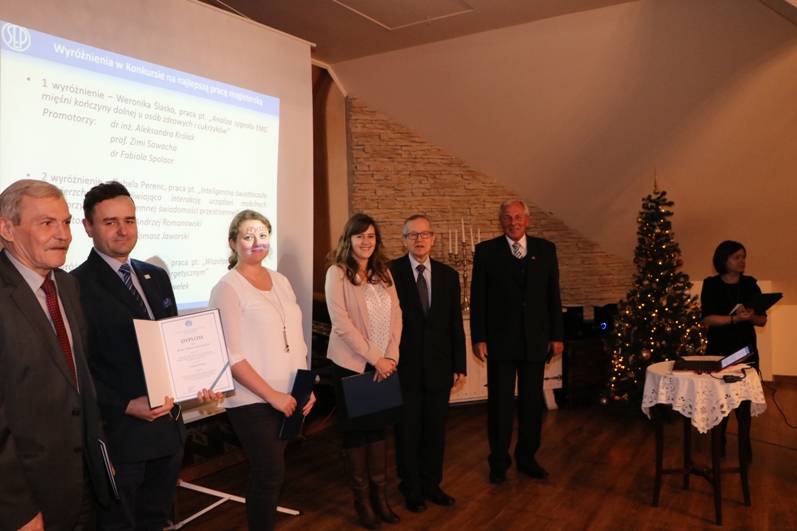
Abstract
The aim of the study was to analyze the activity of lower limb muscles during gait, stair ascent and treadmill exercise in diabetics with peripheral neuropathy and healthy persons. Gait analysis involved 10 control and 9 neuropathic subjects, stair negotiation analysis – 10 control and 7 neuropathic and treadmill exercise analysis – 7 participants in both groups. The electrical activity of six muscles was recorded bilaterally: rectus femoris, gluteus medius, tibialis anterior, peroneus longus, gastrocnemius lateralis and extensor digitorum. Time and space parameters were determined using two force plates and a motion capture system. Data was analyzed by the use of MATLAB software. A program embracing the double threshold method devised by Bonato and Knaflitz was designed. The durations of muscles activity were calculated as well as the fragment of movement cycle in the moment of the activation and deactivation of muscles. The data was analyzed in the SPSS software by means of independent-samples t-test. In gait reduced ankle mobility of diabetic neuropathic subjects was confirmed by earlier cessation of TA and GAL activity and reduced duration of EXD contraction. Reduced stabilization of hip was approved basing on reduced duration of GM activity and earlier activation of RF. In stair ascent the duration of GAL activity was longer suggesting reduced knee stabilization in diabetic patients with neuropathy. Prolonged activation of RF was detected confirming that reduced mobility of ankle is compensated by increased activity of hip flexor muscles. The results suggest presence of deviations in activity of lower limb muscles in subjects with diabetic neuropathy. Keywords: diabetic neuropathy, electromyography, lower extremity, activities of daily living.
-
ANALYSIS OF HUMAN HEAD EXPOSURE TO 5G TERMINAL RADIATION
Jorge Lorrondo Perez-Izaguirre
2nd place in the nationwide competition of Commission K of the Polish National Committee of URSI for the best diploma theses in the field of electromagnetism in biology and medicine 2023
Supervisor: prof. Łukasz Januszkiewicz
The competition was open to graduate students studying at universities in Poland, whose diploma theses concern topics covering the scope of interest of the K URSI Committee.
The awarded work was devoted to the analysis of the impact of 5G terminals on the human body. It included an analysis of changes in the radiation characteristics of the fifth generation terminal. The amount of energy absorbed by the head of a person using this device was also simulated.
RECONSTRUCTION OF OBSERVED IMAGES FROM EEGs
Kacper Ogórek
Honorable mention in the prestigious competition of the Polish Section of IEEE for the best engineering diploma thesis 2021
Supervisors: prof. Paweł Strumiłło and dr Paweł Poryzała
The aim of the competition was to support and promote the authors of the best theses, to promote the idea of IEEE and to cooperate with the scientific community, industry and IEEE.
Electronic Control System for A Solar Powered Electric Car
Jakub Felcenloben
3rd place in the Competition for the best engineering diploma thesis organized by the Łódź Branch of SEP in the 2018/2019 academic year.
Supervisor: prof. Piotr Korbel
Abstract
Nowadays humanity realizes the consequences, that global warming can have on the Planet Earth and how humans contribute to this effect. Modern transportation is undergoing a massive transformation, mostly in the shape of electromobility. However, charging an electric car from the power grid usually involves the component of burning fossil fuels. Students of the Lodz University of Technology have designed and built a family solar-powered electric car to compete in the Bridgestone World Solar Challenge 2017. The aim of this thesis is to describe the design and implementation of an electronic control system for the next generation of the Polish solar car – the Eagle Two. Firstly, the state of the art in the field of the solar cars is presented. Then, the requirements for the system are constructed as a list of components, which need to be controlled, such as the drive train components, battery management system and the driver interface, as well as the set of qualities and features, that should characterize the project. The control system is presented as a set of electronic modules based on the STM32 Nucleo microcontroller board, which communicate using the Controller Area Network. Lastly, the assembly and the testing process of the modules is presented. Keywords: solar energy, electric car, microcontroller, CAN bus, batteries.
Design of a web portal allowing transfer and visualisation of 3D files in NIfTI format
Aneta Andrzejewska
2nd place in the Competition for the best engineering diploma thesis organized by the Łódź Branch of SEP in the 2016/2017 academic year.
Supervisor: prof. Andrzej Materka, Auxiliary promoter: dr. Marek Kociński
Abstract
The primary purpose of this study is to propose a solution for sharing 3D medical images representing cerebral arterial and venous blood-vessel systems obtained from Magnetic Resonance Angiography. The outcome of the project will be a web portal allowing transferring, downloading and visualising 3D files, which design and implementation process will be described in this dissertation. At first, theoretical background needed to understand the process of creation will be presented, which will include a description of medical file formats, characteristics and requirements for medical databases and issue of data transfer safety. Next part of this dissertation will focus on the solution itself mainly on dataset, server and programming languages used in the project. The web portal created is based on Yii2 framework and is divided into front-end and back-end applications, which functionalities from the implementation and user point of view will be presented. Furthermore, system compliance with WCAG 2.0 standards will be depicted. The dissertation will conclude with ideas for possible future development of the project.
Numerical skeletonization of 3D binary object
Piotr Zasiński
1st honorable mention in the Competition for the best engineering diploma thesis organized by the Łódź Branch of SEP in the 2016/2017 academic year.
Supervisor: prof. Andrzej Materka, Auxiliary promoter: dr. Marek Kociński
Abstract
This thesis explores the methods of extracting skeleton from three-dimensional binary discrete object. It aims to implement and, should it be possible, improve open-access algorithms of skeletonization of 3D binary objects. The algorithm is implemented as a console application written in C++. The core of the thesis is based on the work of Lee, Kashyap and Chu (LKC). The thesis describes some basic constructs of digital image processing. For the analysis of objects' topology the notion of Euler characteristic is explained. The algorithm suggested by Lee, Kashyap and Chu is meticulously investigated. Possible ways of realizing each particular step of the algorithm are presented. Attention is drawn to some potential disadvantages of the geometric conditioning used by Lee, Kashyap and Chu. Possible alterations are suggested, justified and tested. Created application is compared with openly available alternatives. Some errors in the results obtained using existing implementations are uncovered and pinpointed. The created solution appears to be free of those mistakes. What is more, the extracted skeletons exhibit a slight improvement in quality, which manifests in their more accurate length.

